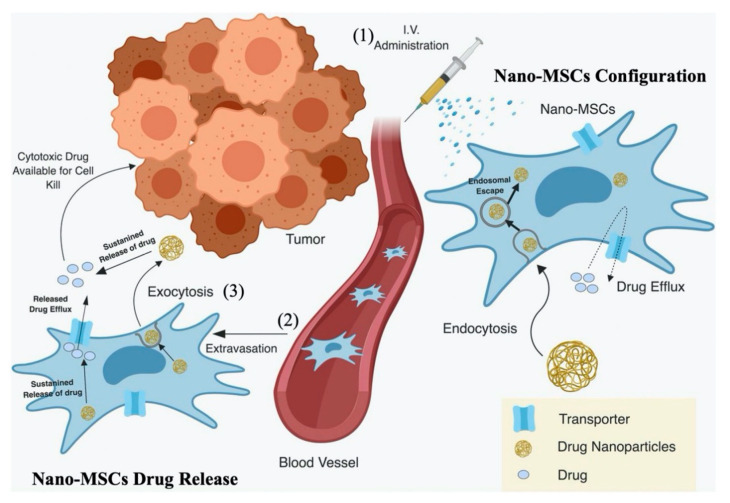Figure 1.
Schematic picture for the hypothetical mechanism of the action of nano-engineered mesenchymal stem cells (nano-MSCs). Following an intravenous (IV) administration of nano-MSCs (1), despite the immature release of free paclitaxel (PTX) and paclitaxel poly (lactide-co-glycolide) nanoparticles (PTX-PLGA NPs) from nano-MSCs in the plasma, PTX was rapidly carried by MSCs towards tumor-bearing sites by either active migration and extravasation or passive retention (2). PTX-PLGA NPs were then slowly exocytosed from MSCs into interstitial fluid (3). The released PTX-PLGA NPs can diffuse across the interstitial space and be taken up either by tumor cells to induce anti-tumor efficacy or by tissue cells to induce off-target effects. The PTX free drugs released from PLGA NPs inside and outside MSCs can also introduce either efficacy or toxicity. Reproduced with permission from [2], ASEPT, 2019.

